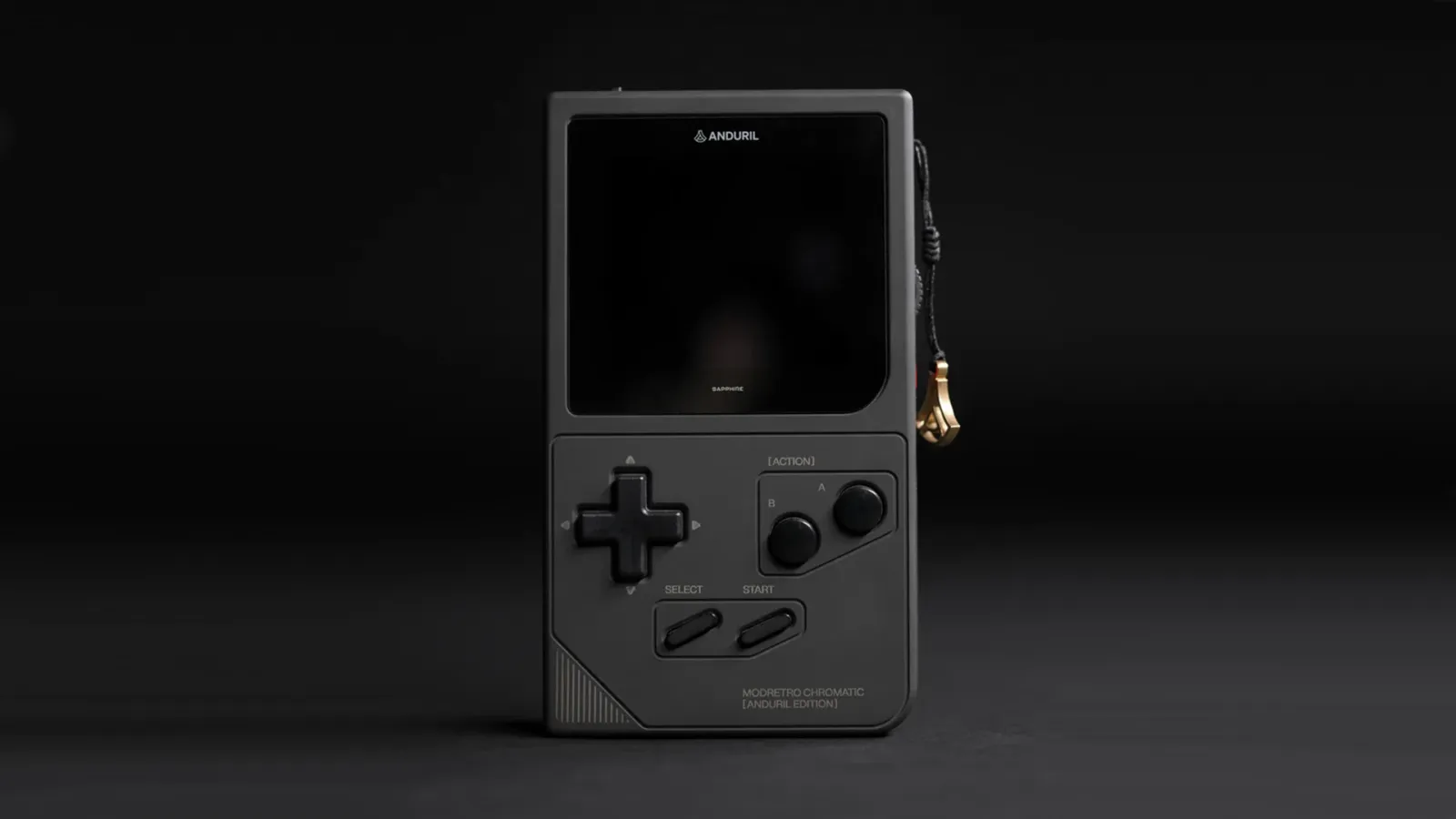For many gamers out there, the Gameboy Micro may still feel like a little bit of a mystery. Many of us had already moved onto collecting the best Nintendo 3DS games by the time that it came out, and we were already looking forward towards the future of touchscreen gaming.
But one year after the release of the legendary DS, a wildcard was born.
Nintendo ran with the Gameboy Micro for three years, providing gamers who couldn’t get over the fact that the Gameboy Advance would soon be going into a retirement home for discontinued consoles a chance to keep their horizontal handheld dreams alive.
Over the course of this article, we’re going to learn everything about Nintendo’s last entry into the Gameboy series, how it competed with other consoles released by the gaming giants, and what it was like to play.
Oh, and we’ll also explain what on earth a Gameboy Micro is for people who still have no idea what I’m talking about!
The Ultimate Guide To The Gameboy Micro
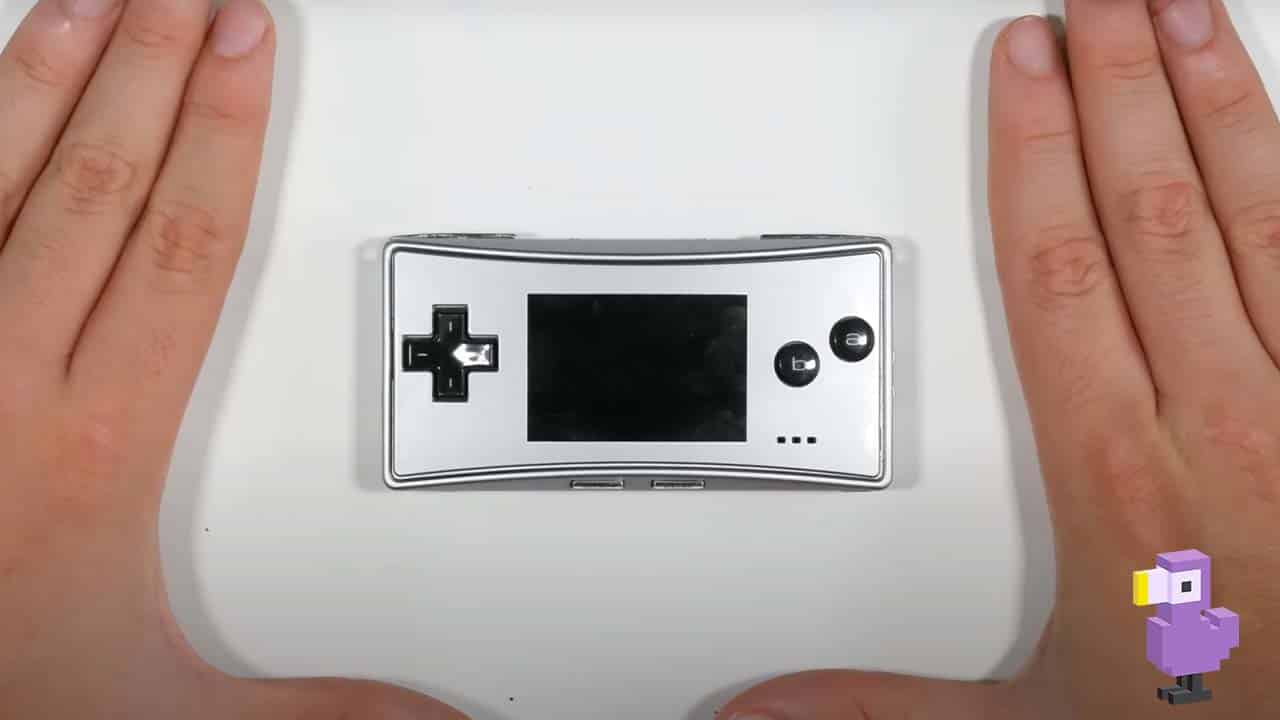
What Is A Gameboy Micro?
Let’s start with the basics and work up from there.
The Gameboy Micro is the last handheld Gameboy that Nintendo produced. It’s a follow up to the success of the GBA and came out around the same time as the AGS–100 GBA SP model.
For anyone who just assumed that I spat out some Alphabetti-Spaghetti, then let me explain.
The AGS–100 GBA SP was an updated console released in N.America with a brighter backlit screen that went completely black when turned off.
It also had a brightness switch too, for anyone who’s really interested in the subtle differences.
But back to the Gameboy Micro. As the name suggests, this handheld was pretty tiny, and we’ll get onto just how ‘micro’ the Gameboy Micro was in a second.
The Gameboy has had a pretty striking evolutionary process since its release back in 1990. We’ve seen the DMG get slimmer, colour added into the equation, a camera peripheral entering the Guiness Book of Records, and the whole design being flipped 90 degrees for increased comfort.
Nintendo had always been thinking about creating an even smaller Gameboy, though quite why they decided to do it after the release of their new Nintendo Dual Screen handheld I will never know.
They must have had their reasons… surely.
Gameboy Micro Release Date
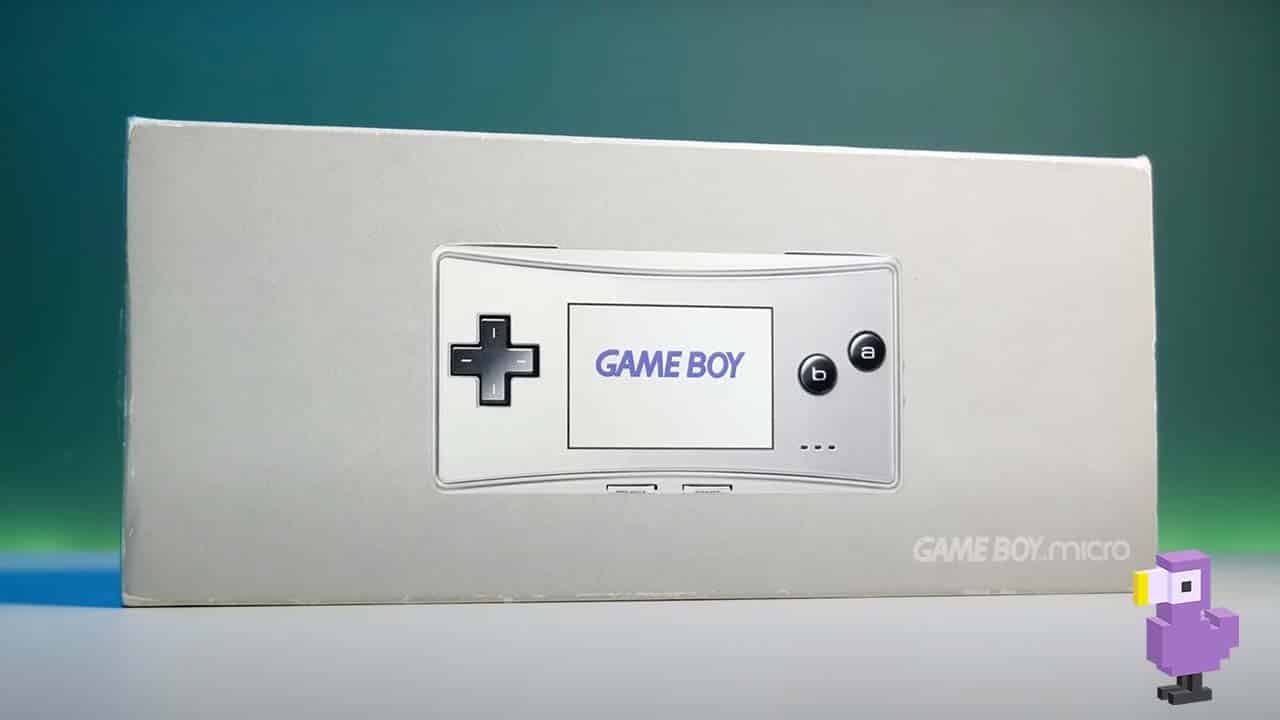
The Gameboy Micro was first released in Japan on September 13th 2005, followed by America just 6 days later.
It was a further 2 months before Europe and Australia got their hands on the console, but boy was it worth the wait.
As I’ve already mentioned, the Micro was thrown into a world where it had to compete with the GBA SP and the Nintendo DS. It was, without a doubt, a console for the die-hard Gameboy fans out there and in some ways a box that could be finally ticked off on Nintendo’s bucket list.
Just How ‘Micro’ Is The Gameboy Micro?
Nintendo wanted to make a small handheld, and they certainly achieved what they set out to do!
At just 50×101×17.2 mm (it’s best to have the measurements in mm to make this tiny console easier to understand), the Gameboy Micro was one diddy device.
That makes it almost as small as the novelty Game Gear Micro that will be dropping in Japan any time now!
Now, you might think that this console would have been a bit fiddly to play, but it actually worked really well.
Sure, it didn’t fill your hands quite like the GBA did, but it felt solid and responsive, and it took portable gameplay to a whole new level.
It felt like a box of Tic-Tacs compared to the chunky DS when you put it in your trouser pocket!
What Games Does The Micro Play?
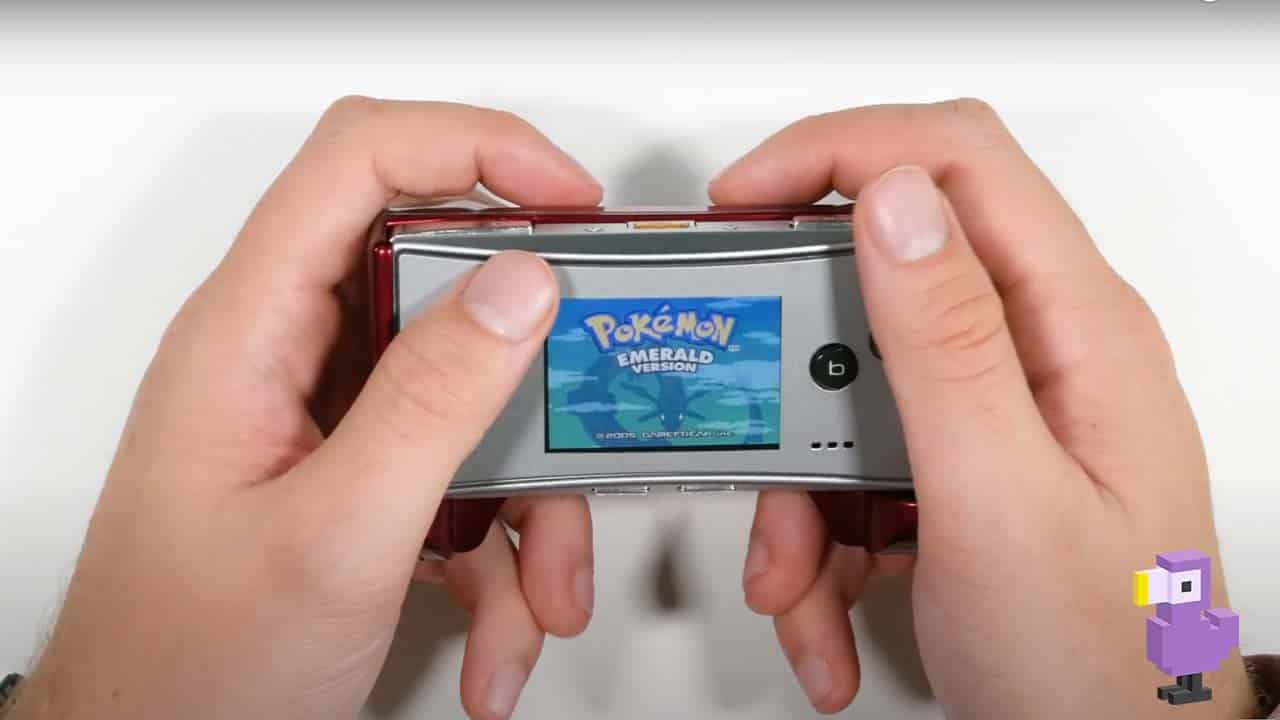
Unlike the GBA SP and the GBA that can play all of the best Gameboy games and the best Gameboy Color games as well as native ‘Advance’ titles, the Gameboy Micro could only play GBA games.
You might think that this a little odd, especially since the all-singing-all-dancing DS could play those games with ease.
Well, with a smaller console comes fewer responsibilities (as Spiderman’s uncle might have said to him while purchasing a Gameboy Micro).
The Gameboy Micro had all of the necessary graphics and processing power to handle those older Gameboy carts, but it lacked the parts needed for backwards compatability.
Before you go off in a huff about the fact that you can’t play Kirby’s Dream World on the Gameboy Micro you’ve just purchased off eBay while reading this article, let’s just take a second to think about the rationale behind this decision.
Nintendo wanted to make the smallest Gameboy on the market. What’s the point in having a small Gameboy with a massive cartridge sticking out of it?
It wouldn’t look very groundbreaking, would it? And it certainly wouldn’t be as slimline in your pocket.
And if you want to play those original DMG games, then they should be played on the console they were meant for anyway. Everyone knows that…right, Nintendo?
(Or an Analogue Pocket or the Retron JR, but you didn’t hear it from us… got it?)
What Makes It Tick?
While it has a lot of the same innards and functionality of the clamshell GBA SP, the Gameboy Micro has a few differences that make it a ‘console of the time’.
The lack of backwards compatability means that you won’t be able to plug any e-readers or other gadgets into it that might have worked with your GBA.
But once you get over that crushing blow, there are so many more interesting features to get excited about.
For starters, this console only weighs 80g. That about the same as a decent sized packet of crisps or a chocolate bar.
It’s also about a third of the weight of the iPhone 11, and the rechargeable lithium-ion battery probably lasts a heck of a lot longer too.
You’ll get 5 hours of play with the brightness up to full or 8 hours if you like to play with it all the way down like back in the ‘good old days’.
Does The Gameboy Micro Have A Backlit Screen?
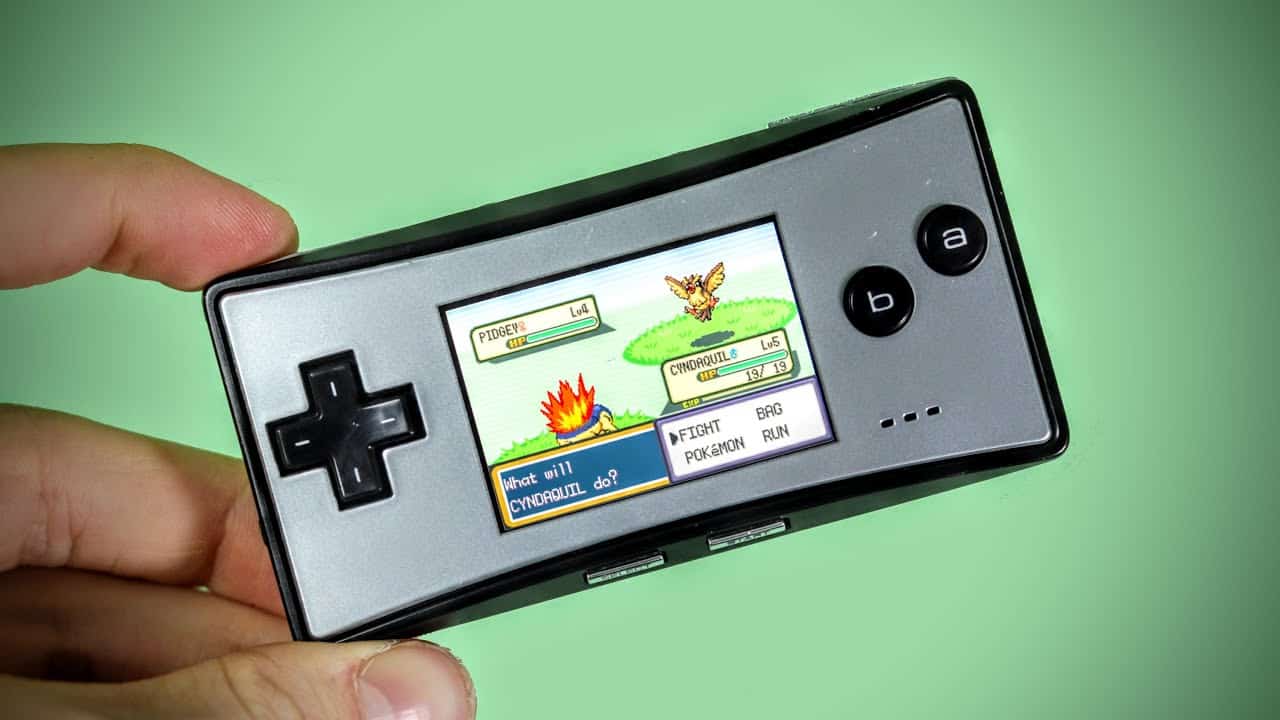
Yes! You will never have to use one of those crappy wormlights ever again!
The 51mm screen has an adjustable brightness function and boasts 512 colours in cell character mode or a whopping 32,768 in bitmap mode.
I never knew that many colours existed! That would definitely make buying paint a lot harder!
That puts the Micro instantly ahead of the original GBA and GBA SP which both had frontlit screens…
… though I fear the change may have been too little too late to save it from dwindling into obscurity at the hands of the DS marketing team.
Gameboy Micro Resolution
240×160 pixels.
That’s the same as the purple GBA that we all know and love, though the Gameboy Micro still manages to come out at just over half the weight of its bigger brother.
Granted the GBA uses batteries and is a lot bigger, but I’d still call that a win!
You do get half the battery life of the GBA, however, but I’d rather have to charge up a little more often than go through AA batteries faster than the Duracell Bunny at Burning Man Festival.
(If you know, you know).
The Micro also comes with a 3.5mm headphone jack and uses a 32-bit 16.8 MHz ARM processor, the same as the one that you’ll find inside the GBA.
All in all, that’s a lot of tech crammed into such a tiny handheld!
Gameboy Micro Faceplates
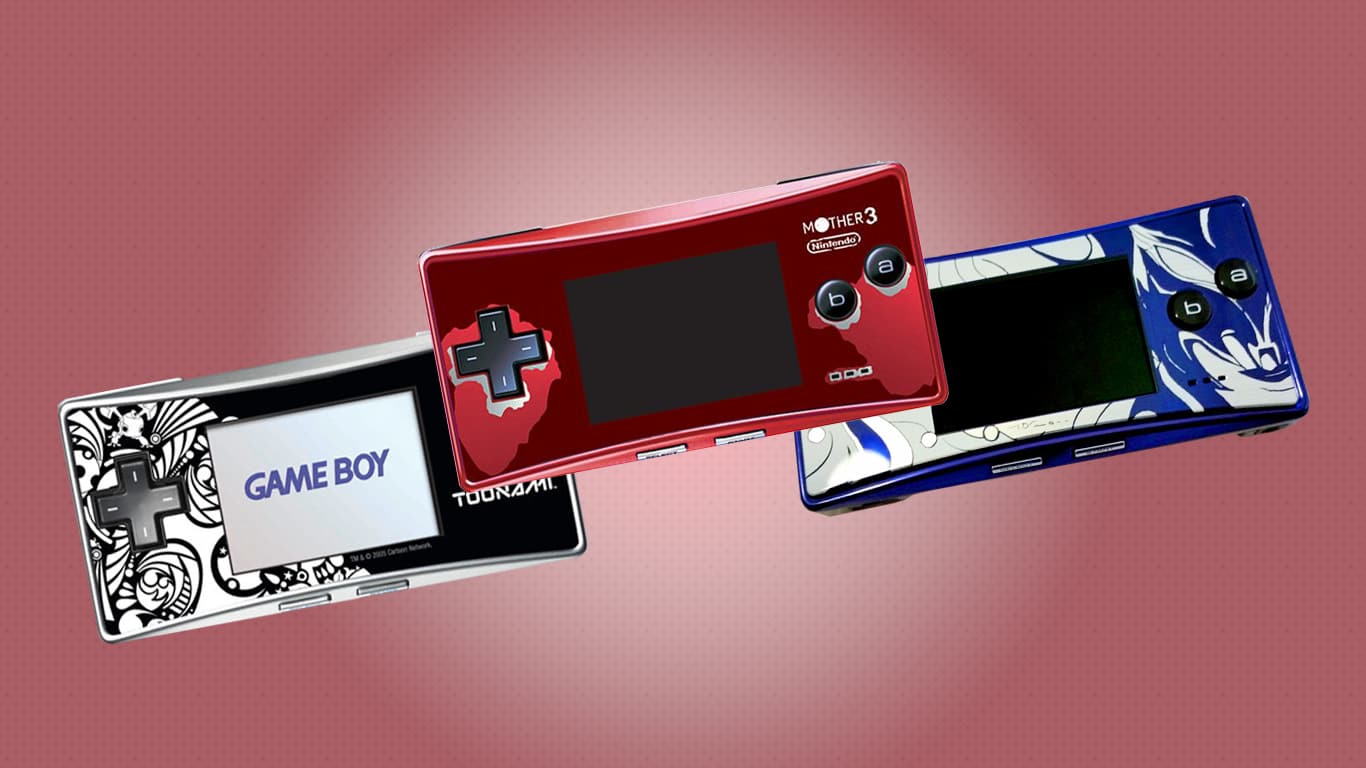
In an unusual move for Ninty, the Gameboy Micro ditched the plastic housing used by its predecessors and opted for a metal casing instead.
This gave the Micro a seriously sturdy feel, one that we’ve recently felt replicated in the RG350M. I never bothered buying a case for mine as I figured Bowser would have been hard pushed to put a dent in it, never mind the ground or a table edge!
In another cool move, Nintendo made the faceplate removable, allowing fans to add custom colours and designs to their console.
Finally, a handheld that could really show off your personality and the games that influenced you as a hardcore Gameboy fanatic.
How Well Did The Gameboy Micro Sell?
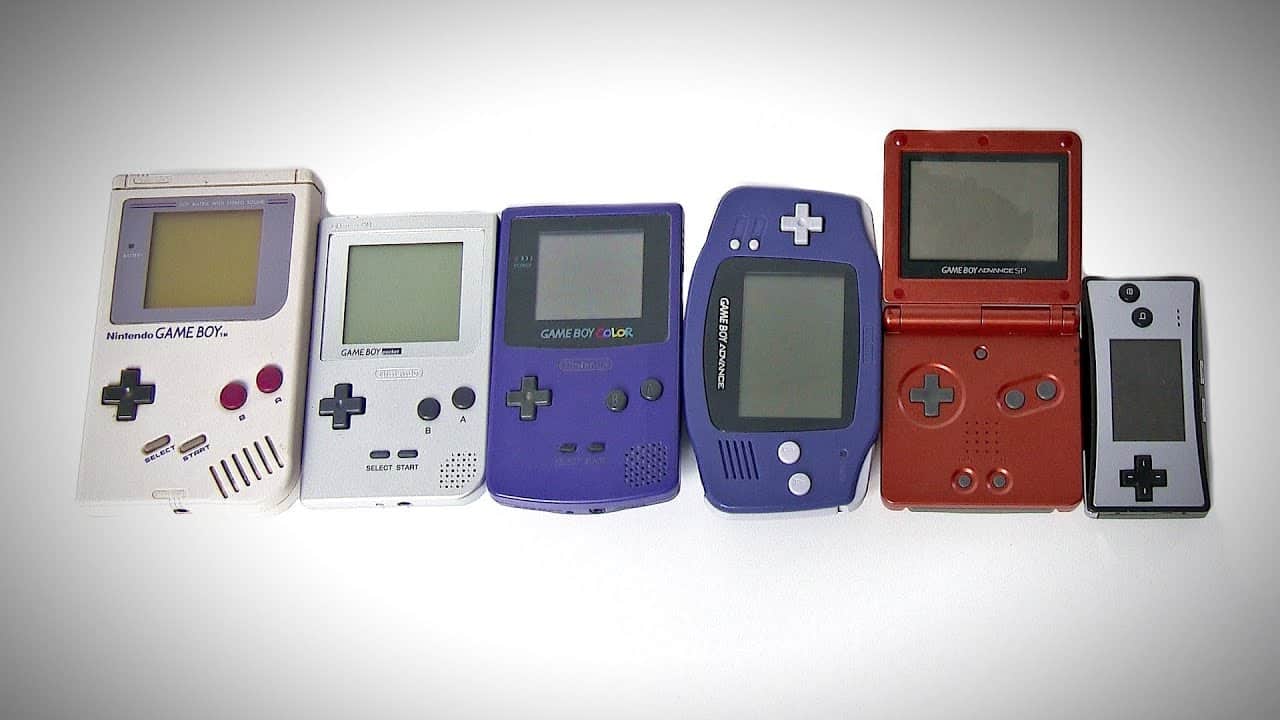
The Gameboy Micro had quite a short lifespan, lasting just three years before being discontinued in 2008. Over that time period, Nintendo only sold 2.5-million units of their new console.
The handheld got off to a flying start in Japan, selling 170,000 consoles over the first couple of days.
Many N.American stores, however, pushed the release of the Micro back or gave it a soft release because they didn’t want it to interfere with DS sales.
And in a way, I don’t think we can blame them.
Nintendo definitely dropped the ball when they released the Micro just a year after the DS, especially while marketing for the new Dual Screen touchpad console was still everywhere you looked.
I never even knew that this console existed until later in life, which goes to show how little attention was given to the final entry in such a legendary console series.
The Death Of The Gameboy?
Many people see the Gameboy Micro as a bit of a flop, a sad way to end the Gameboy series that had seemingly ended on a high after the backlit SP dropped onto the scene.
I some respects, those people are right.
Yes, the Micro sold 2.5-million units and the GBA and GBA SP combined sold over 120-million units, and it would have been nice to stay with those consoles and end on a high.
But I wouldn’t say that the Micro killed off the Gameboy line.
It was, in many ways, Nintendo having a bit of fun, finishing off an idea that they had had in their heads for a while.
And besides, can you really kill off a console as influential as the Gameboy?
We’ve seen its influence in new consoles like the new Gameboy Flex, the PiBoy DMG, and many of the other best retro handhelds on the scene today.
And with the new Game and Watch handheld dropping to celebrate Mario’s 35th Anniversary, a Gameboy Mini could be just around the corner.
Should I Buy A Gameboy Micro?
Honestly, yes.
You can pick one up second-hand without a box for about $160, or you can spend around $350 if you fancy getting one that’s still nicely packaged up in a box.
That seems expensive, but this is a piece of gaming history, and it’s a perfect console for anyone who loved the GBA but hated having to play next to a lamp at night.
Ok, so you could always buy a modded Gameboy, but there’s just something about the Micro that we at Retro Dodo can’t get enough of.
It’s oozing with that ‘what could have been’ factor that surrounds consoles like the Dreamcast.
Though most importantly, it looks cool when you pull it out of your pocket.
And who knows, we may see something like it popping up from the Japanese gaming giants in the coming years.
They’re never one to let a good idea go to waste, so I guess we’ll just have to watch this space!






